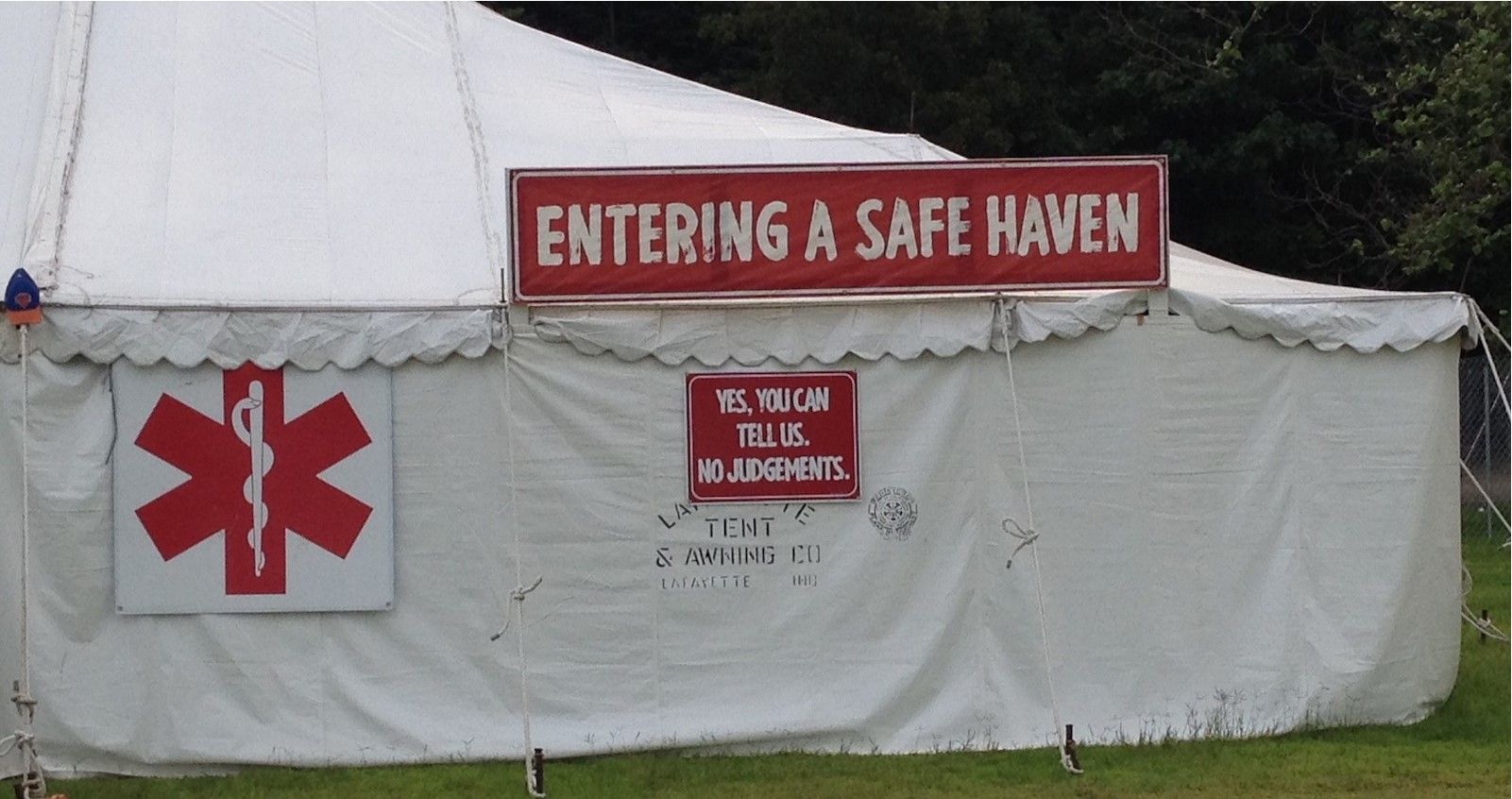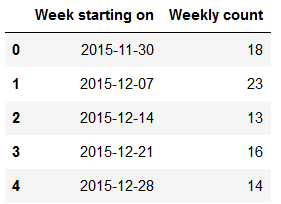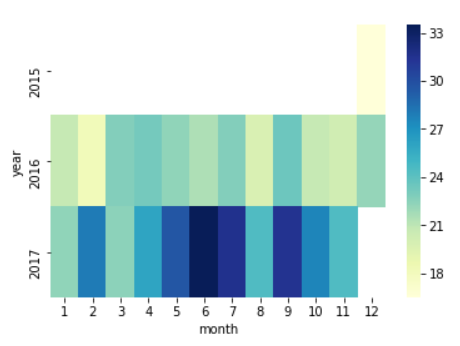To view the code used in this analysis, check here.
Today, I will be taking a look through the Emergency Overdoses dataset. The dataset itself is very simplistic, just 2 variables - the week of the count of suspected emergency overdoses and the count of suspected emergency overdoses.
Let's take a look at the actual data. To really visualize the cases, I have taken the count of overdoses as a weekly average for each month. The following heatmap gives us a better picture of the scale of suspected emergency room overdoses since December, 2015.
The graph shows us that cases of suspected overdoes appear to have peaked around the middle of 2017 (for now).
Hospital officials warned of a suspected spike in overdoses potentially related to Fentanyl in late April 2017. This warning came after hospital emergency rooms faced 15 cases of suspected overdoses within 72 hours, where they would normally expect 3 cases a day. The thing is, Fentanyl has been documented in Canada for many years prior, so this may be no more than an unlucky coincidence.
The worst monthly average as reported in this dataset occurs in June 2017, with an average of 33 suspected cases per week.
In late August 2017, Ottawa's first pop-up injection site opened its' canvas flaps. Following this, the first supervised injection site opened its doors in late September 2017. The pop-up injection site was already reporting over 1,000 uses in its first month by this point.
The good news is that since June 2017, the weekly average number of suspected overdose cases in emergency rooms has lowered. The bad news is that, year over year, it is up by an average of more than 3 cases per week.
There are many benefits to a supervised injection site for opioid users. From clean needles to dedicated, caring staff, clients are in a much safer environment than if they were taking drugs on the streets. The most important benefit, however, may not even have been realized yet.
The education of clients, on both safe practices for drug use, and on programs to help them get cleaned up, can be a huge win in the "war on drugs". It remains to be seen whether this will have an effect on suspected overdose cases, and whether this will help reduce deaths occuring.
In the future, the same analysis should be applied to the data, to determine whether or not the sites have had any kind of effect on the suspected overdose cases.
Due to privacy concerns, and employee time constraints, I am not expecting a more robust dataset anytime in the future. I would assume that the city and the hospitals are working with much more detailed data, so here is to hoping that they can help control and start reducing this serious problem.


